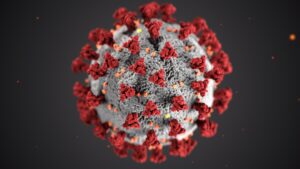What are Infectious Agents?

Infectious agents are organisms that can infect other organisms and cause infection or infectious disease. Healthcare workers have a high risk of contact with infectious agents so it is important that they take proper precautions. Types of infectious agents include viruses, bacteria, and parasites.
Infectious Disease Transmission
The main routes of infectious agent transmission are physical contact, droplets, and airborne. Physical contact can mean direct contact with another human or indirect contact with an item carrying infectious agents. Droplets containing infectious agents can spread when an infected person talks, coughs, or sneezes. Droplets can also spread during medical procedures such as suctioning or endotracheal intubation. Infected droplets can infect others when they come into contact with mucosal surfaces of the eyes, mouth, and nose. Airborne infectious agents can be suspended in the air in miniscule droplet nuclei. These agents can infect others when inhaled. Osha’s infectious diseases page has more in-depth information.
Types of Infectious Diseases
- HIV/AIDS
- Influenza
- Measles, Mumps, and Rubella
- Pneumonia
- STDs
- Covid-19
To learn more about how viruses can increase cancer risk visit the National Cancer Institute’s infectious agents page
Preventing the Spread of Infectious Agents
- Stay at home if you feel symptoms of an infection
- Take antibiotics only when prescribed
- Wash your hands often
- Practice safe sex
- Get vaccinated
- Don’t share personal items
- Wear a mask (in the case of Covid-19 and other airborne viruses)
